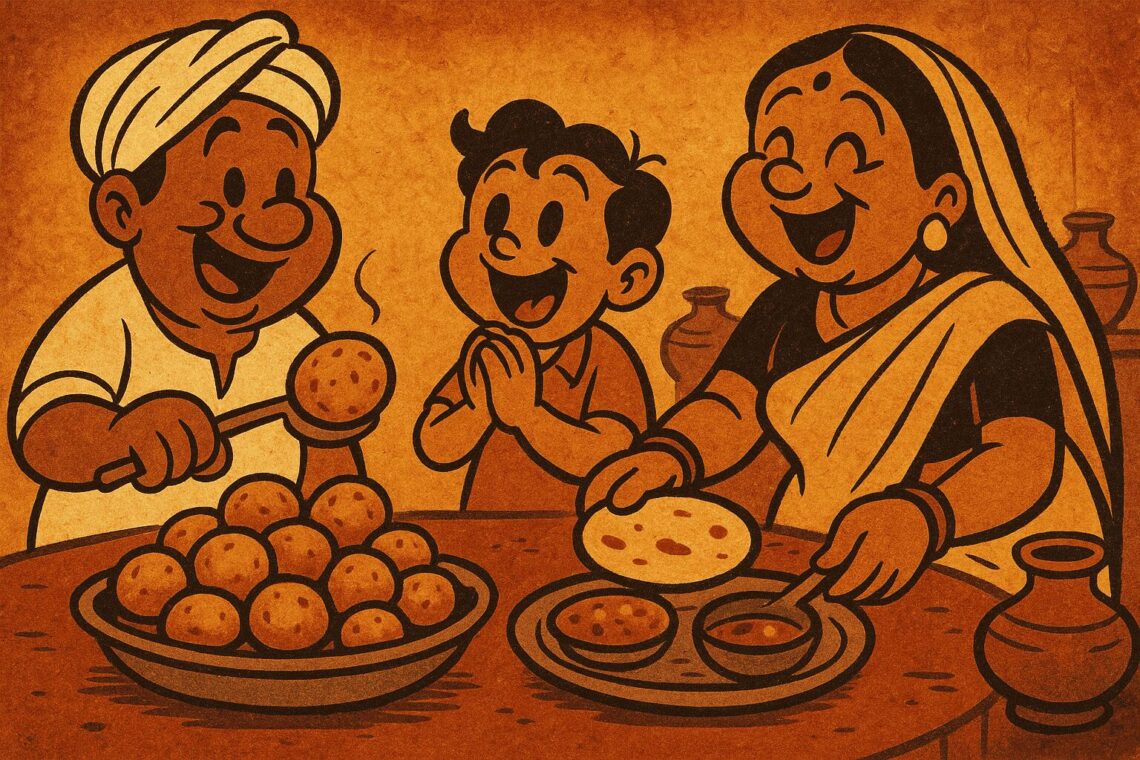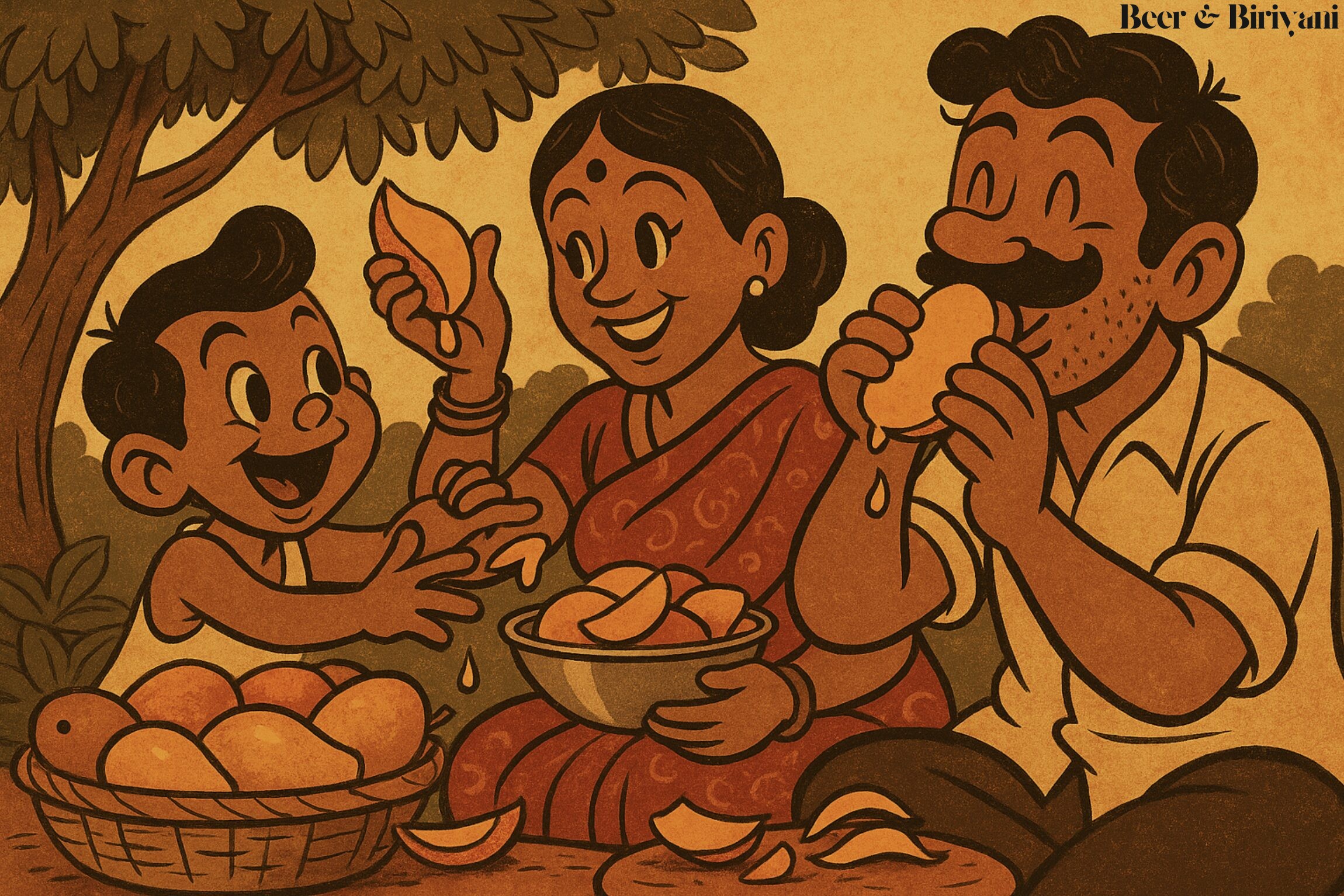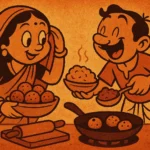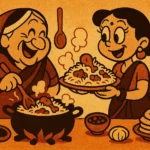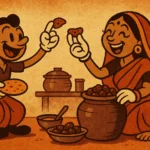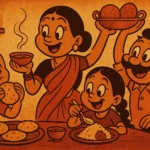It was June in Austin, the kind of hot that makes you question your life choices and start Googling “cheap homes in Maine.” I had just wrapped a mind-numbing Zoom meeting where someone earnestly said “let’s circle back offline” three times in 11 minutes. My fridge, a graveyard of well-intentioned groceries, offered me one wilted bunch of cilantro, a mysterious jar of something that used to be green, and—redemption—a box of Alphonso mangoes.
Not just any mangoes. These were Hapoos, air-flown from Ratnagiri, carefully bubble-wrapped like they were auditioning for a high-end skincare line. I’d paid more for the box than I did for my first flip phone. But at that moment, I knew: dinner was going to be just mangoes. And not in a salad, not in a salsa. Just mangoes, peeled, sliced, maybe a little cold milk on the side if I felt fancy.
In Mumbai, Mangoes Weren’t a Season. They Were an Emotion.
Back home, the arrival of mangoes wasn’t marked by a date. It was marked by scent. Around mid-March, a quiet buzz would start in the markets of Matunga and Dadar. The fruitwalas would whisper that the first batches had come in—early, overpriced, not quite ready, but here. Soon, crates of mangoes would begin appearing under stairwells, in borrowed godowns, and across living room floors, ripening under newspaper and surrounded by straw. That smell—of sweet ferment and anticipation—was the real start of summer.
Every family had a mango strategy. Some swore by Badami, others fought over Kesar. In our house, it was Alphonso or nothing. My father would buy them in bulk from a guy in Parel who he claimed had “direct Ratnagiri contact.” A proud Marathi man, he believed most other mangoes were just glorified papayas.
We didn’t just eat mangoes. We courted them. We chilled them in buckets of water. We slurped the pulp straight from the seed like wild animals. We had them with poli (chapati) for lunch and with rice and cold milk for dinner. My mother would make aamras on Sundays, blending the pulp with a pinch of cardamom and letting it rest in the fridge like a queen taking her nap. It was ladled out into bowls and eaten in near silence, because talking while eating mango was disrespectful—to the mango.
Mangoes in America Are a Tragic Plot Twist
When I moved to Austin in my thirties, the first thing I missed—after my mother, and then my maid—was mangoes. Grocery store mangoes here are either underripe or over-enthusiastically sweet, like a Disney Channel actor trying too hard. They don’t smell like anything. No scent, no sap, no sticky fingers. Just vibes.
So, like any homesick Indian, I found myself sucked into the online mango mafia: WhatsApp groups trading intel on Alphonso shipments, Facebook uncles rating different importers like wine sommeliers. “These Devgad ones have good nose, but body is weak,” someone posted once, and I laughed so hard I snorted chai.
The Dinner That Wasn’t a Dinner
Back to that June evening. I peeled the mangoes over the sink, carefully slicing the cheeks off the seed. The juice ran down my wrists, sticky and golden, the way it did when I was eight. I sat cross-legged on the couch with a bowl of chilled aamras and a plate of sliced fruit, and let the silence wrap around me.
No rice. No bhaji. No curry. Just mangoes, and a little salt on the side if I felt nostalgic. It wasn’t balanced or logical or adult. But it was perfect.
Why Mangoes Matter
In Indian homes, food has always been more than sustenance. It’s narrative. A memory keeper. Mangoes especially. They carry the weight of school vacations, sweaty afternoons, napping under ceiling fans, and your mother yelling, “Don’t eat too many, you’ll get heat boils!” They remind you of grandparents with silver hair and secret mango-picking spots, of cousins fighting over the last guthli, of leaning out of rickshaws and catching a whiff of the season before you saw it.
Eating mangoes for dinner, far from being indulgent, was an act of reconnection. To my roots, yes—but also to a version of myself who didn’t need to justify joy with a side of protein. Who knew that sometimes, pleasure was its own nutrition.
How to Mango Like a Pro
If you’re new to Indian mangoes and want to experience the magic (without being fleeced by shady e-commerce listings), here’s a quick guide:
- Alphonso (Hapus): From Ratnagiri or Devgad. Short season, huge following. Sweet, floral, melts in your mouth. Aamras gold standard.
- Kesar: Saffron-hued and slightly more fibrous, but incredibly fragrant. Great for desserts.
- Badami: The underdog from Karnataka. Juicy, reliable, and doesn’t bankrupt you.
- Totapuri: Slightly tangy, firm flesh. Not for aamras, but great for pickles and raw mango dishes.
And please—don’t refrigerate them until they’re ripe. Let them sit on your kitchen counter, perfume your home, and tell you when they’re ready. Trust the mango.
Final Slice
I won’t pretend that mangoes can fix everything. They won’t make your rent cheaper or your boss less annoying. But for a few golden weeks in summer, they can transport you. To a slower world, a stickier kitchen, a sweeter childhood. Where dinner doesn’t need planning, just peeling.
And maybe that’s enough.
Born in Mumbai, now stir-frying feelings in Texas. Writes about food, memory, and the messy magic in between — mostly to stay hungry, sometimes just to stay sane.

